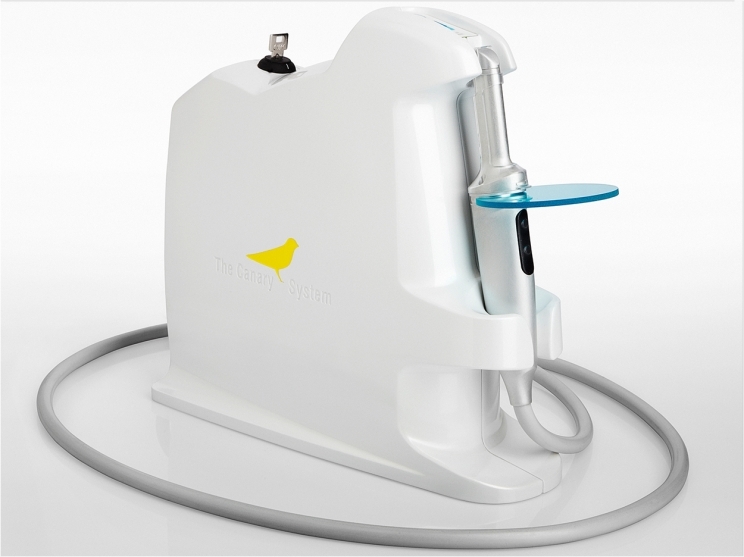
The Canary System from Quantum Dental Technologies can detect caries under the intact margins of glass ionomer and compomer restorations more accurately than Spectra, DIAGNOdent, and visual examination, according to a study the company presented at the 96th General Session of the International Association for Dental Research in London.
Finding caries beneath intact restoration margins is a challenging clinical problem, the company reports. Glass ionomer and compomers are radiopaque and reflect light from their respective surfaces. The study found that visual examination could not detect caries. The glow or fluorescence from the restorations prevented Spectra from detecting any marginal caries.
Also, DIAGNOdent was unable to consistently differentiate sound from carious tissue at various distances from the restoration margins. However, it was able to detect between 20% and 70% of the lesions beneath the restorations depending on the distance from the margin.
The Canary System, the company says, was able to detect 91% to 100% of the lesions around the restoration margins. This study demonstrates that it is a valuable diagnostic tool for detecting caries that develop around and beneath the margins of glass ionomer and compomer restorations, according to Quantum Dental Technologies.
The findings in this study mirror the findings in studies of the detection of caries around amalgam, composite, orthodontic brackets, and ceramic crowns, the company says. In each of these clinical situations, the Canary System was able to detect more than 90% of the lesions beneath these various restorative materials, Quantum Dental Technologies reports.
“The Canary System provides dentists with the ability to detect and monitor tooth decay beneath the edges of fillings, crowns, and bridges, one of the most common clinical conditions that would lead to the failure of these restorations,” said Stephen Abrams, DDS, cofounder of Quantum Dental Technologies.
“X-rays can only aid clinicians to diagnose decay on the sides or interproximal areas of teeth. When a glass ionomer or compomer restorations are placed, x-rays can only detect tooth decay in certain limited areas and not along the visible margins,” said Abrams.
“Compomers and glass ionomer may reduce the incidence of marginal breakdown but caries can still develop. Early detection of tooth decay, before it is seen on an x-ray or detected with visual inspection, means that dentists can treat problems before the decay has destroyed large amounts of vital tooth structure,” said Abrams.
The Canary System is designed to quantify, image, monitor, and record changes in the structure of enamel, dentin, and cementum. It can detect caries beneath opaque sealants, around the margins of restorations, around orthodontic brackets, and beneath interproximal, occlusal, and smooth surfaces. With the Canary Cloud, dentists can view and analyze this data and track Canary usage in their office, Quantum Dental Technologies says.
Related Articles
Canary System Beats Other Methods in Measuring Lesion Depth
ADA Approves Code for Canary System
Canary System Inventors Nominated for Innovation Award


